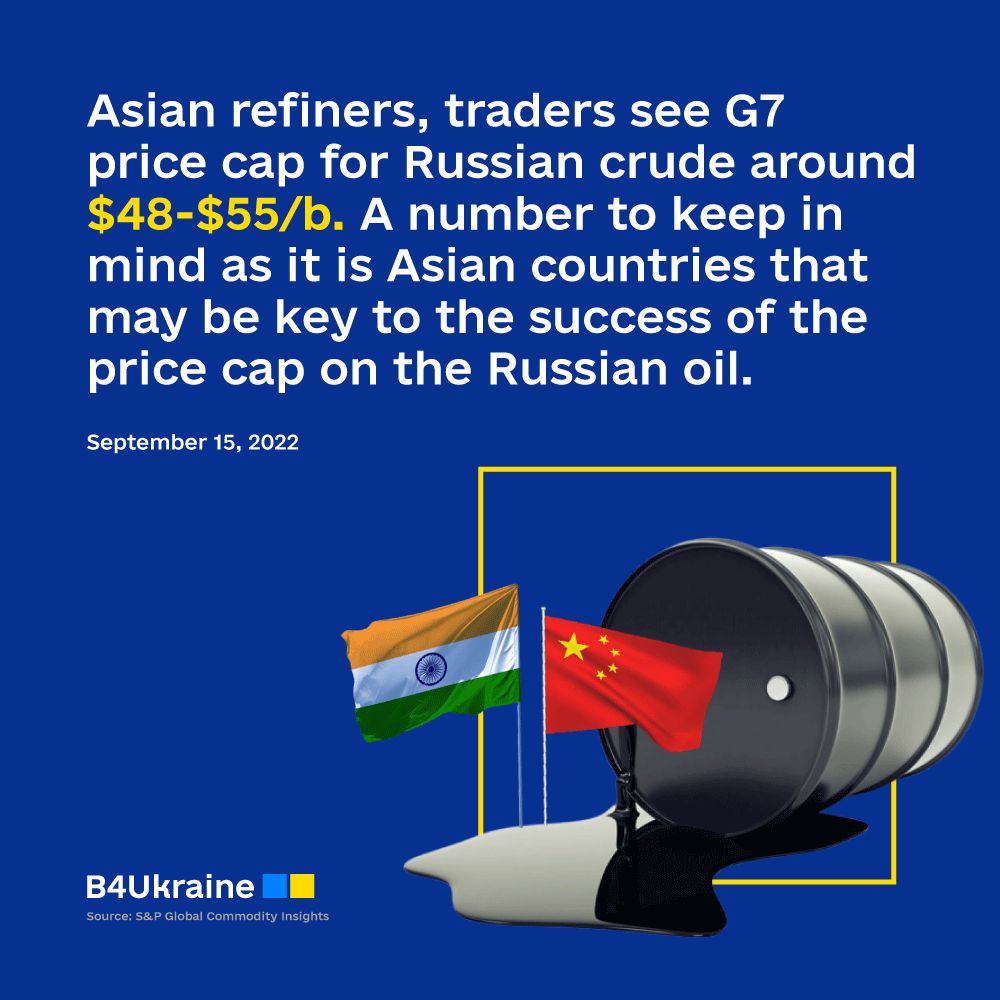
As talks about introducing a price cap for Russian oil grow with more and more details, S&P revealed a valuable finding: Asian refiners and traders based in Japan, India, South Korea, China, and Southeast Asia see a G7 price cap for Russian crude as around $48-$55/b compared to the current price of $70-$90/b.
We follow the topic closely, as energy exports are one of Russia’s primary sources of income allowing it to wage the destructive war in Ukraine. The actual price cap level is yet to be decided. Still, it is Asian countries that may be the key to the success of the price cap introduction, particularly the two largest buyers of Russian oil - China and India. Hence, it is crucial to examine what Asian markets expect from the price cap.
All we know for now is that the price cap will be set above Russia’s production costs. There are plans to set a specific price point for Russian crude and two different ones for refined products, the G7 officials said. It is currently unclear if China and India will join the price cap installment. However, as S&P argues, rather than expect China and India to join the G7 price cap alliance, the US hopes the price cap will increase the discount for Russian crude in the global market, giving Asian refiners additional leverage to lower prices in supply talks with Russia. This will deprive Russia of some revenue it now receives from Asian buyers.
As S&P states, China’s independent refiners were especially excited about the potential opportunity to buy Urals crude at desirable prices as long-haul shipments of the medium sour Russian grade have been costly and troublesome. While some Southeast Asian and Indian state-run refiners, such as Indian Oil Corp and BPCL, say they could use the price cap as a reference in negotiating for steep discounts on Russian oil deals.
However, some Asian buyers like South Korea and Japan plan to go further and completely stop buying Russian oil.
Asian refineries are still careful with estimating the possibility that a price cap can be used, as it depends on Russia’s willingness to sell within the price cap range, but they do see opportunities in it and this is a good sign. The more countries will join this movement, the bigger the hit will be on Russia’s energy revenues. In the end, this will help to deprive Russia’s war machine of funding. The sole news on the talks about the upcoming price cap installment has already pushed prices for Russian oil down to the 14-month low level, according to Bloomberg. The actual introduction of the price cap will deal the real blow, mainly if Chinese and Indian refineries use it as leverage to cut the price of the oil they buy from Russia even further.